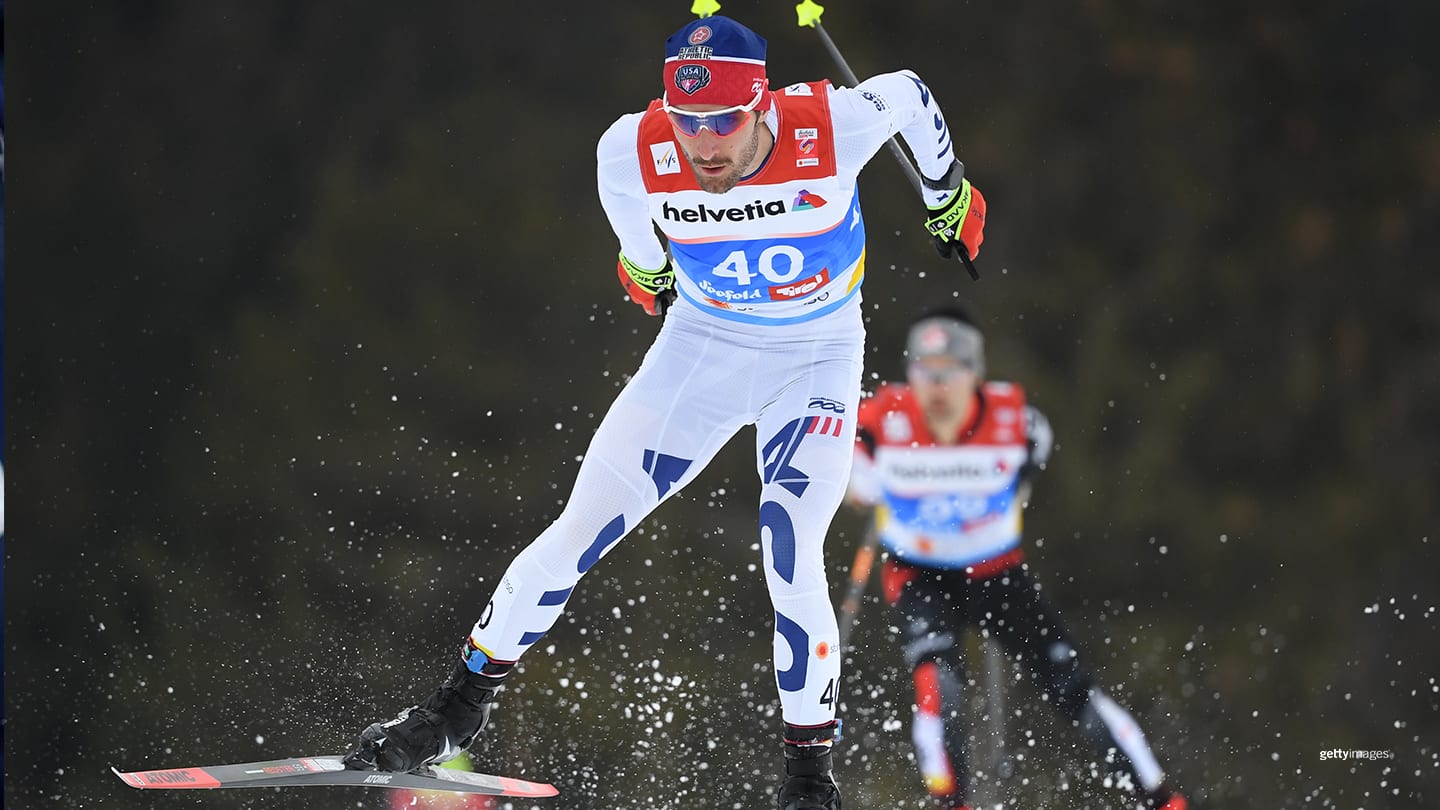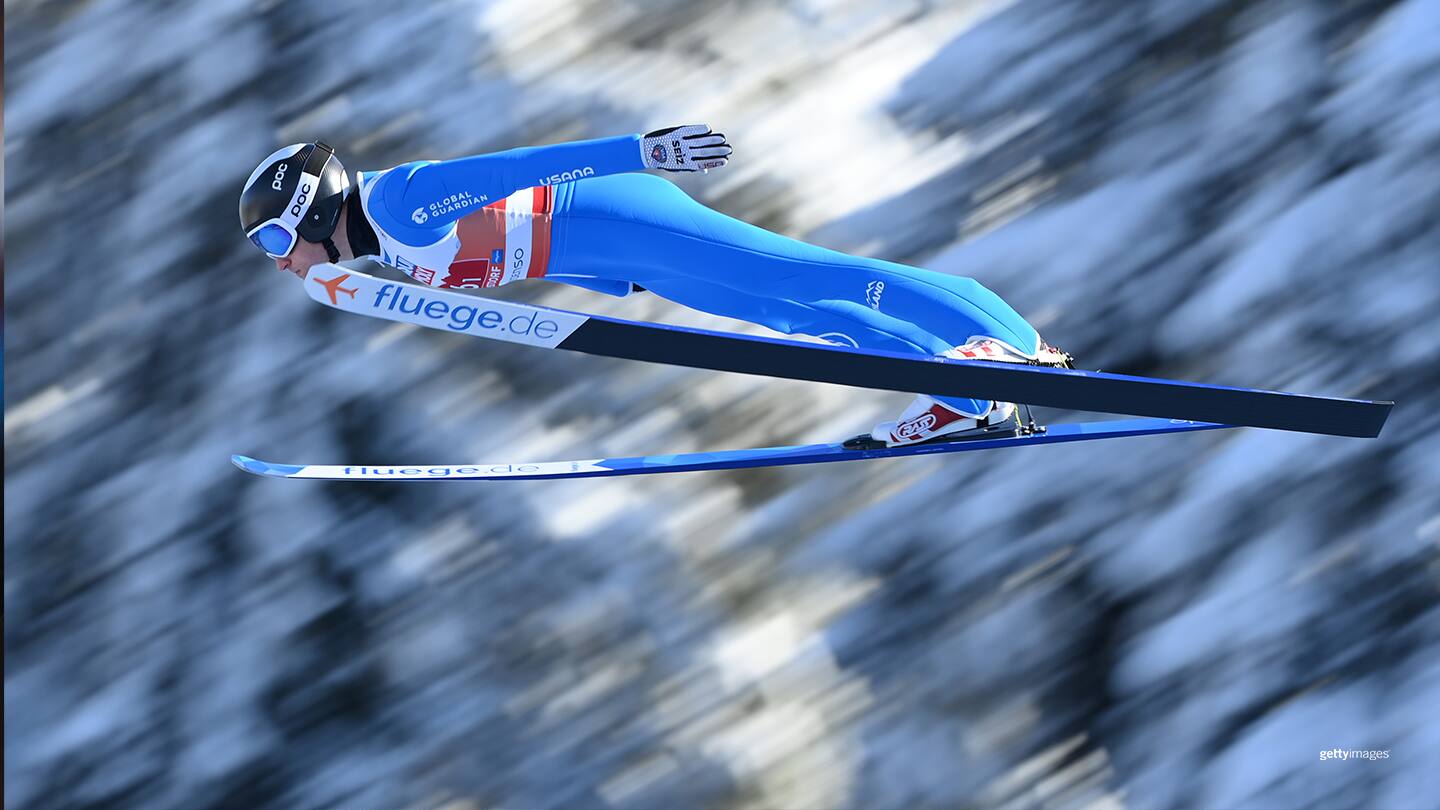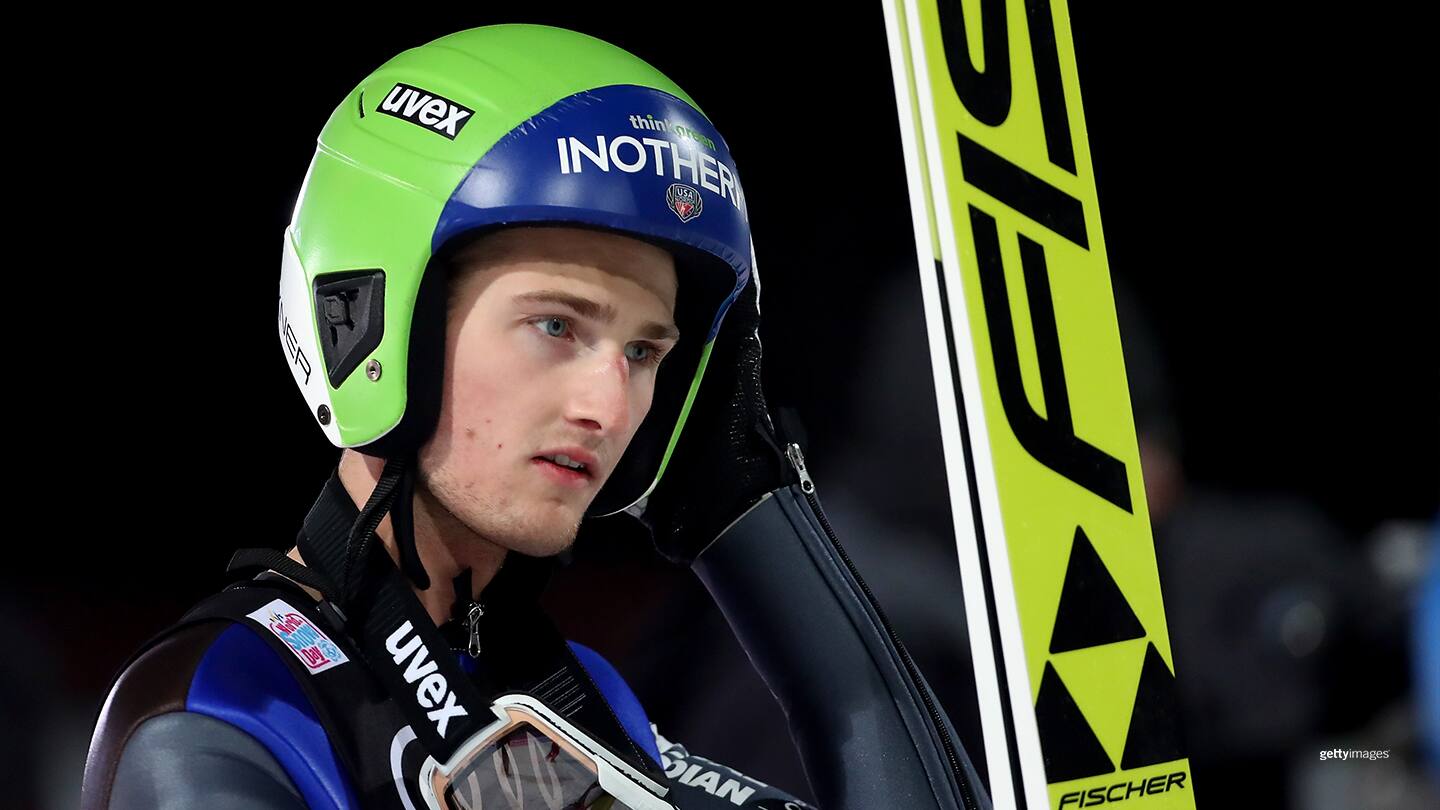
Olympians & Olympic Hopefuls Take To The Air At Nordic Combined and Ski Jumping Olympic Trials
by Peggy Shinn

Taylor Fletcher competes during the nordic combined competition of the FIS Nordic World Ski Championships on Feb. 22, 2019 in Seefeld, Austria.
Lake Placid, New York, will be decked with more than holly and mistletoe on Christmas this year. Athletes newly qualified for the Olympic Winter Games Beijing 2022 will be in town, too.
The U.S. Olympic Team Trials — Nordic Combined and Ski Jumping are coming to Lake Placid’s Olympic Jumping Complex on December 24 and 25. Thanks to new renovations, the complex has the only ski jumps in North American homologated for year-round international competition.
The two-day event will feature Olympians Taylor Fletcher, going for his fourth Olympic Games, Ben Loomis and Jasper Good in Nordic combined, 2018 Olympians Kevin Bickner and Casey Larson in ski jumping, plus several talented hopefuls. They are all aiming to qualify for the Olympic Winter Games Beijing 2022.
Women’s Nordic combined has yet to make the Olympic program, and U.S. women’s ski jumpers have not yet qualified a spot for the 2022 Beijing Winter Games. But the female ski jumpers can still earn a quota spot after trials (in world and continental cup events), so women’s ski jumping at trials will also be heated.
Here’s a look at how each competition works and who to watch.

Ben Loomis competes in the ski jumping leg during the men's nordic combined team HS137/4x7.5 kilometers at the FIS Nordic World Ski Championships on March 06, 2021 in Oberstdorf, Germany.
Nordic Combined #
Nordic combined trials begin on Dec. 24 with the men ski jumping on the normal hill (HS 100). Competition then moves up the road to Mt. Van Hoevenberg for the 10-kilometer freestyle race that afternoon. Skiers set off in a staggered start according to how they finished in the ski jump, with the best jumper starting first. The first competitor across the finish line wins the 2022 U.S. Olympic Team Trials and earns automatic nomination to the team. Others will be named to the 2022 U.S. Olympic Team based on world cup standings and results after the qualification period ends on January 16, 2022. USA Nordic has five possible quota spots in Nordic combined.
U.S. Nordic combined’s heyday was the Olympic Winter Games Vancouver 2010 when Billy Demong and Johnny Spillane brought home gold and silver medals, respectively, in the large hill event; Spillane collected silver in the normal hill; and Demong, Spillane, Todd Lodwick and Ben Camerota claimed silver in the team large hill competition.
The U.S. team has not been as strong since then. But it’s had its moments, such as Taylor Fletcher winning a bronze medal at the 2013 world championships and making the world cup podium twice in his long career. Fletcher, now 31, is affectionately called “Old Man” by his teammates. But this Old Man — one of the fastest skiers on the world cup circuit — will be hard to catch. Should he win trials, Fletcher will become a four-time Olympian.
Fletcher will face tough competition from 2018 Olympian Ben Loomis. A silver medalist at the 2016 Youth Olympic Games and bronze medalist at 2018 world junior championships, Loomis, 23, has consistently finished in the points this season in world cup competition and is currently the top-ranked American.
Jasper Good, 25, is also looking to make his second Olympic team, while young gun Niklas Malacinski would like to make his first. A dual citizen in Finland and the United States, 18-year-old Malacinski competed in his first world cup last January. He finished fifth at the Youth Olympic Games Lausanne 2020, and he aims to bring U.S. Nordic combined back to its glory days of a decade ago.

Kevin Bickner reacts after his competetion jump of the FIS Nordic World Cup Four Hills Tournament on Jan. 6, 2018 in Bischofshofen, Austria.
Ski Jumping #
While ski jumps look dizzyingly tall, the sport is judged on how far skiers fly, not how high they jump. And there are two sizes of Olympic ski jumps — normal hill and large hill. At U.S. Olympic Team Trials — Ski Jumping, held on Christmas day this year, competition will take place on the normal hill, where the best jumpers will land around 100 meters from take-off.
Kevin Bickner, 25, is a favorite to lock up the automatic nomination at trials. At the 2018 Olympic Winter Games, he had the farthest jump of round one and ended up 18th. It was the best finish for an American ski jumper since the 2002 Olympic Games. He also holds the U.S. distance record at 244.5 meters.
But Bickner did not compete on the world cup circuit last season (staying home because of the Covid-19 pandemic). This might open the door for fellow 2018 Olympian Casey Larson. The 23-year-old has recovered from major shoulder surgery, was the top athlete last season internationally, and recently won two national titles.
Trying to make his first Olympic team, Decker Dean is described as “The Jumping Machine.” He finished second in the Willingen Continental Cup last February, and then laid down the longest jump of his career — 211 meters (the 21st farthest jump in that round — in training for the world cup in Planica, Slovenia.. Now 21, Dean hopes to one day break the jump record of teammate Kevin Bickner.
The U.S. only has two quota spots for the male ski jumpers at the Beijing Games, which means the American men will not be able to compete in the Olympic team event. No women have yet qualified either, nixing Team USA’s ability to compete in the new mixed event.
But the women still have a chance to earn a quota spot in an upcoming world cup. If they do earn a spot, the winner of ski jumping trials will automatically make the team heading to Beijing. Nina Lussi is one of the top contenders. The 27-year-old Lake Placid native was injured on her way to victory in the 2018 Trials. Winning Trials this time around would be redemption.
Anders Haugen remains the only U.S. ski jumper to have won a medal at the Winter Olympic Games. At the Olympic Winter Games Chamonix 1924, he was originally credited with fourth place. But a half-century later, it was discovered his total points had been calculated incorrectly. Haugen had actually finished third. He received the bronze medal at a special ceremony in 1974.
Peggy Shinn #
An award-winning freelance writer based in Vermont, Peggy Shinn has covered six Olympic Games. She has contributed to TeamUSA.org since its inception in 2008.